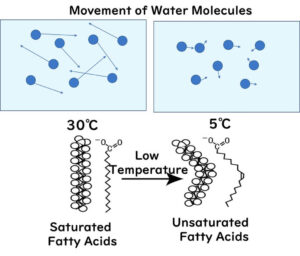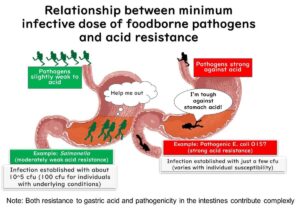Explore the surprising effects of freezing on bacteria in this scientific inquiry. We examine how microorganisms from different environments respond to extreme cold, focusing on their survival, dormancy, and death mechanisms. This article highlights crucial findings relevant to food safety, revealing how common pathogens like Escherichia coli O157 react under freezing conditions. Dive into the fascinating interplay between microbiology and freezing temperatures, and discover what this means for food hygiene practices.
Surviving the Freeze: How Microorganisms Adapt to Extreme Cold
When all microorganisms are subjected to freezing temperatures, they either completely halt their physiological functions and enter a dormant state, or they gradually perish. However, the adaptability of microorganisms to freezing stress is diverse. Microorganisms inhabiting temperate zones often encounter freezing conditions in themselves and their growing environments. During the winter, outdoor temperatures drop below freezing, causing the environmental water harboring these microorganisms to freeze.
Contrastingly, many pathogens found on the skin surface or inside the intestines of homeothermic animals like humans enjoy relatively privileged conditions. The majority of natural world microorganisms live in harsh natural environments with significant temperature variations and lack the ability to regulate their own temperature, thus their cellular temperature fluctuates significantly due to external environmental influences.
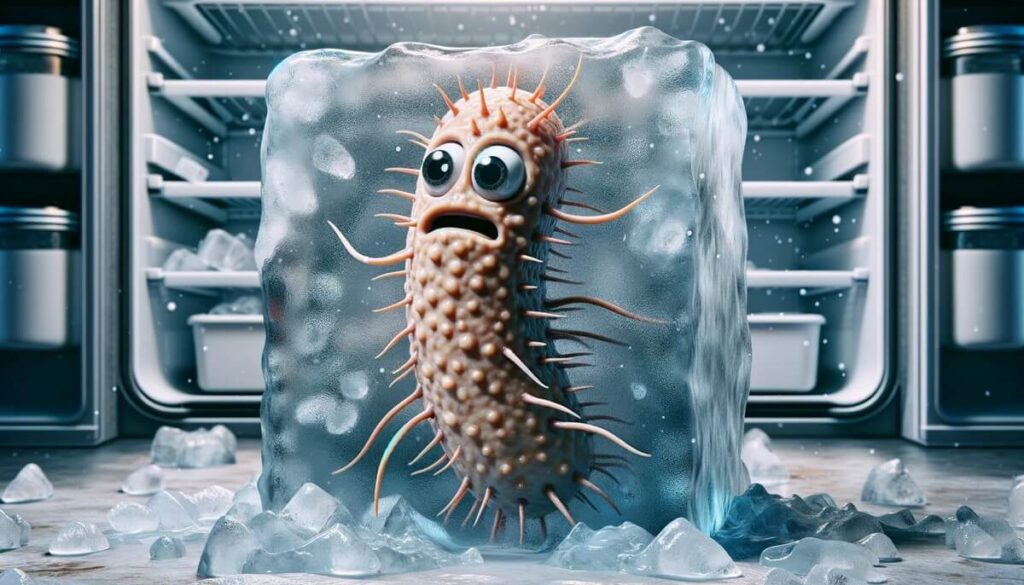
To continue thriving in such conditions, the ability to adapt to low temperatures (cold tolerance, growth, and freezing resistance) is crucial. The properties of microorganisms vary depending on their species and the temperature conditions of their habitats. From a food hygiene perspective, it is essential to accurately understand how foodborne pathogens, such as enterohemorrhagic Escherichia coli O157, are damaged by freezing, how they survive, and the effects on their growth after thawing.
The Damage Mechanism During Freezing
The main mechanisms of microbial death and damage during freezing are believed to be dehydration within the cells and damage to the cell surface structures due to the formation of ice crystals. The behavior of microbial cells under freezing conditions is greatly influenced by the cooling rate and the freezing temperature. The diagram below illustrates the relationship between the survival rate of Escherichia coli and the cooling rate when frozen in water. This relationship can be considered a common characteristic of all cells, regardless of whether they are animal or plant cells.
To simplify, when cooling begins, the external water freezes at just a few degrees below freezing. Even if this extracellular fluid freezes, the cell's plasma membrane acts as a barrier to prevent the entry of ice crystals, thus the water inside the cell does not freeze immediately and becomes supercooled. At the same temperature, supercooled water has a higher vapor pressure than ice, which leads to the dehydration of water from inside the cell to the outside. As the temperature continues to drop, dehydration continues until most of the water inside the cell is depleted. This process is known as extracellular freezing. The harmful effects on the cell due to dehydration are primarily thought to be damage caused by the abnormal concentration of various solutes, including salt within the cell. When the cooling rate is slow, cells gradually suffer physiological damage due to this dehydration effect and eventually die.
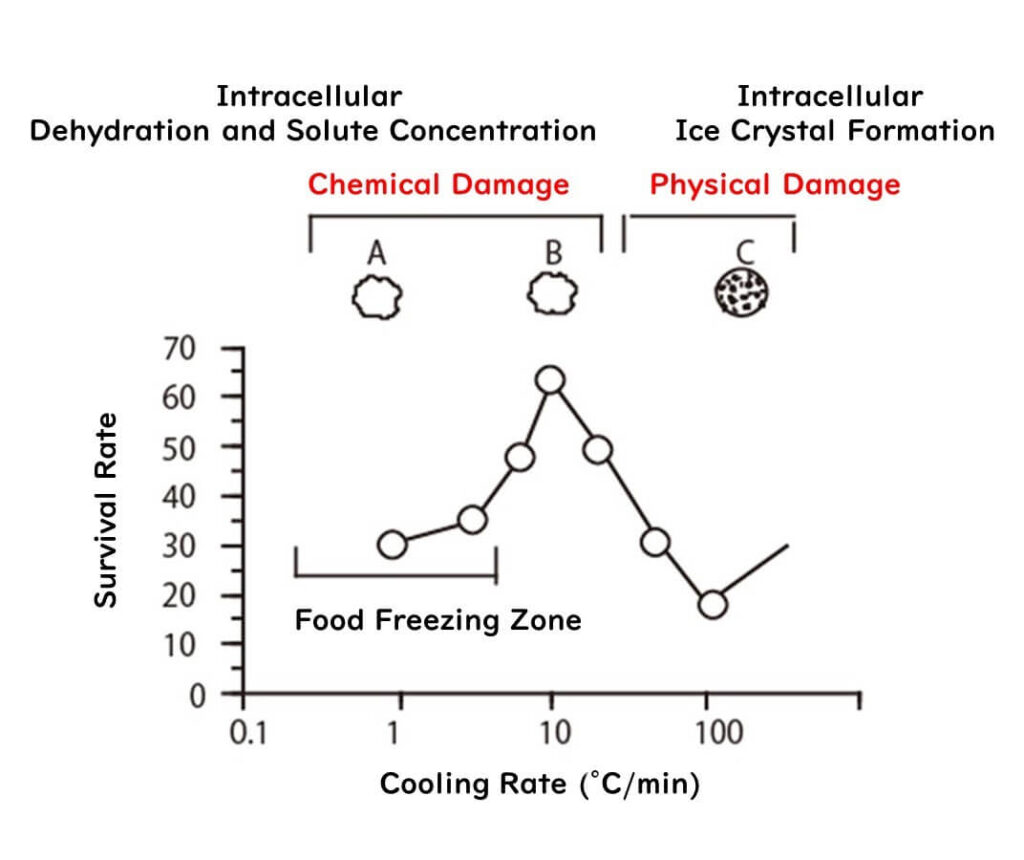
The above figure was drawn by the blog operator based on data from the following paper
Can J Microbiol.1975 Nov;21(11):1724-32.
https://pubmed.ncbi.nlm.nih.gov/1104119/
As the cooling rate increases slightly, the cells freeze before they can be exposed to chemical stress from intracellular dehydration for long, thus improving survival rates.
Furthermore, if the cooling rate increases further, some water remains undehydrated within the cell, leading to intracellular freezing. The occurrence of intracellular freezing significantly decreases survival rates. The damage from intracellular freezing is thought to be due to the physical damage to cellular structures caused by the formation of internal ice crystals. Intracellular freezing is lethal to all living cells. Damage associated with the freezing and thawing of cell walls and membranes leads to the leakage of intracellular materials, disruptions in transport functions on the cell membrane, and other metabolic abnormalities, resulting in death.
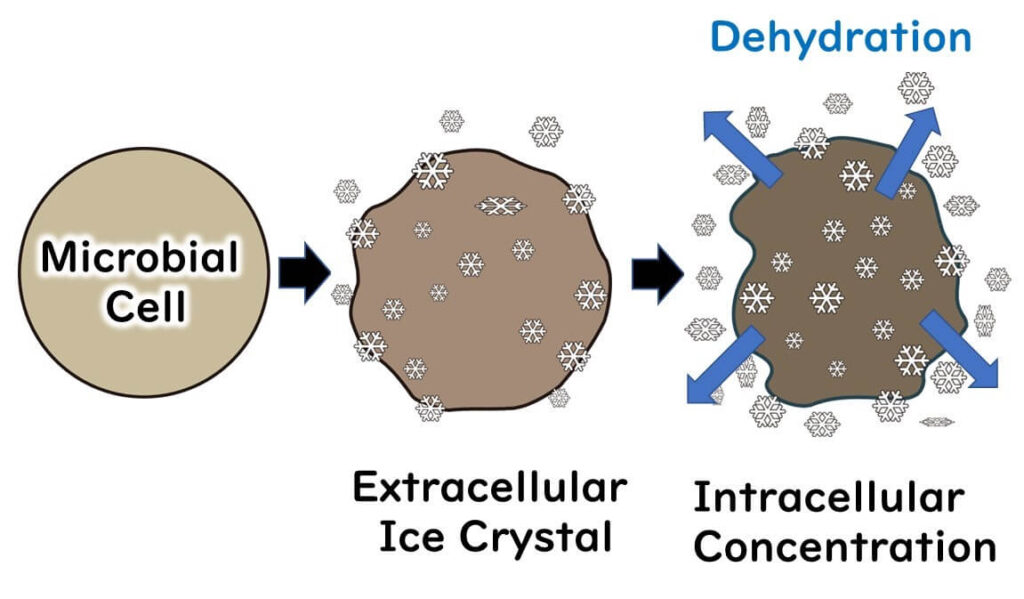
While the above are experimental observations in microbial cells, in actual food freezing, the freezing rate seldom exceeds 10°C/min, so the mechanism of microbial damage in frozen food can generally be considered to be due to intracellular dehydration.
Freezing Temperatures and Cycles
The diagram below shows the number of surviving E. coli in a suspension when subjected to repeated freezing and thawing cycles. As the number of freeze-thaw cycles increases, the number of E. coli decreases. This indicates that the more often bacteria are exposed to dry and dehydrated conditions during the freezing process, the more damage is inflicted on the bacterial cells.
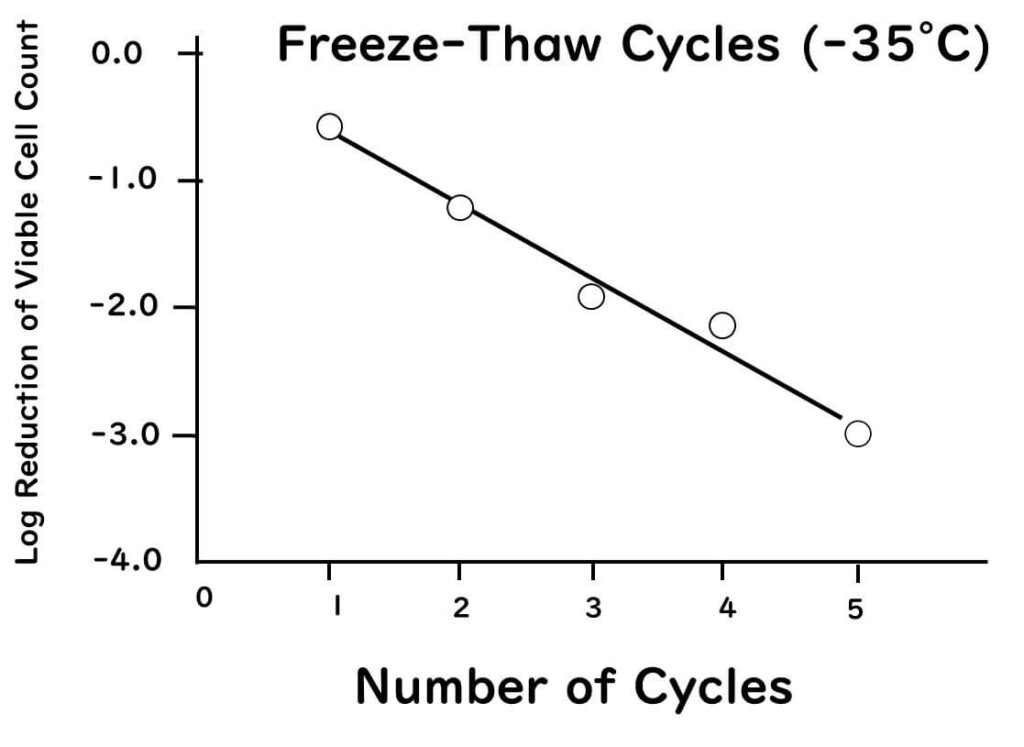
The above figure was drawn by the blog operator based on data from the following paper
How Much Do Bacteria Die During Freezing?
So, how many bacteria actually die when they are frozen?
When bacteria are frozen, they often experience a reduction in numbers by approximately one order of magnitude. This mortality occurs because, as mentioned above, the cells temporarily become dehydrated during the freezing process. The longer the cells remain in this dehydrated state, the more severe the microbial damage.
The diagram below shows the change in the number of Escherichia coli when frozen at three different temperatures: -35°C, -15°C, and -5°C. At -35°C, there is hardly any bacterial death over 30 days of freezing, with a maximum reduction of about 0.5 orders of magnitude. At -15°C, a reduction of approximately one order of magnitude in the number of E. coli is observed. Meanwhile, at -5°C, the bacterial count shows a reduction of nearly two orders of magnitude. This data suggests that "the higher the freezing temperature, the higher the mortality rate of E. coli." However, a deeper interpretation reveals the following:
- A higher freezing temperature indicates that slow freezing is occurring.
- During slow freezing, microbial cells are exposed to the dry, frozen state for a longer period.
Thus, the conclusion is that the slower the freezing speed and the more pronounced the slow freezing, the longer the cells are exposed to dehydration, and the higher the mortality rate.
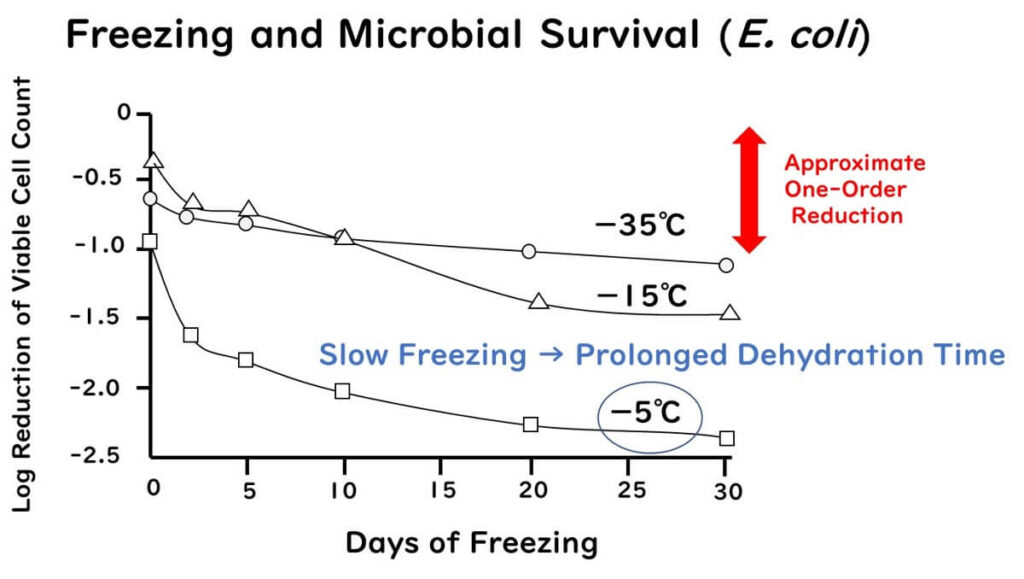
The above figure was drawn by the blog operator based on data from the following paper
As discussed earlier in the article, regarding the initial question of whether "bacteria die or survive during freezing," the scientific response would be that "cell damage occurs due to freezing, leading to death." However, from a practical food hygiene perspective, it is also correct to say that "freezing does not have a germicidal effect." The latter understanding is more realistic because a reduction by one order of magnitude in microbial counts is virtually insignificant. While a reduction from 1000 to 100 people would be a disaster for humans, in the microbial world, such a reduction is trivial since just three divisions can nearly restore the original number. For instance, optimal growth conditions for bacteria like Salmonella and E. coli, which can divide every 30 minutes, mean that if thawed frozen food is left at room temperature for just an hour and a half, the bacterial count could return to its original number.
Furthermore, in the case of frozen seafood, freezing causes tissue damage due to ice crystals, making it easier for spoilage bacteria to invade muscle tissues upon thawing. Additionally, the drip that comes out during thawing, which includes amino acids, salts, and vitamins, can easily become a nutrient source for bacteria. Therefore, once bacterial growth begins after thawing, it often proliferates faster than in unfrozen fish. This factor should also be taken into account.

The graph above was drawn by this blog operator from the following paper, with the necessary data extracted.
Considerations for Microbial Testing in Frozen Foods
As mentioned previously, bacterial cells in frozen foods do sustain some damage. For instance, when measuring E. coli in frozen foods, immediately using selective media could result in an underestimation of bacterial counts. The diagram below compares the counts of E. coli in frozen foods using non-selective media versus selective media (m-FC agar). The selective media records approximately 0.5 orders of magnitude fewer bacteria than the non-selective media.
Thus, it is crucial to be aware of the potential for underestimating bacterial counts when measuring them in thawed frozen foods using selective media. This underestimation occurs because the bacterial cells have been damaged by freezing, which may inhibit their ability to grow on the more restrictive selective media.

The above figure was drawn by the blog operator based on data from the following paper
Natural freezing as a wastewater treatment method: E. coli inactivation capacity
